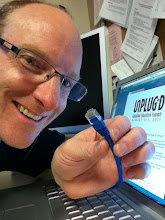 Recent news stories demonstrate how the public is bringing its influence in a more rapid fashion than has ever before been possible. After a calls to action in editorials and blogs like McLuhan's Ghost, the Green Party of Canada was able to overcome a threatened boycott, and will now take part in Canada's pre-election leaders debate.
Recent news stories demonstrate how the public is bringing its influence in a more rapid fashion than has ever before been possible. After a calls to action in editorials and blogs like McLuhan's Ghost, the Green Party of Canada was able to overcome a threatened boycott, and will now take part in Canada's pre-election leaders debate. At the same time, south of the border,
American voices are sharing their opinions of the US presidential and vice-presidential candidates thanks to the mashup work of MIBAZAAR.
I heard about my favourite voice-sharing story quite appropriately, via a radio show. The Telemegaphone project was highlighted on one of my favourite CBC podcasts, your guide to the next big thing: Spark. The Telemegaphone is a large speaker mounted to broadcast phone calls across the hills and fjords of Dale, a town in western Norway. You dial the number, and your voice is heard by the citizenry.

I'd love to see this idea reversed so that instead of this small town receiving ideas, music, and greetings from around the world; listeners around the world, could tune in to listen to commentary from small town individuals through an 'always on' Internet broadcast. This type of John Q. Public broadcasting is already happening with YouTube and Podcasting, but even simpler tools like www.earfl.com, VoiceThread and Seesmic are already making it possible for groups or random individuals to share their thoughts with their real voices.
As more and more of these applications leverage cell phone technology rather than desktop or notebook computer technology, it's easy to imagine a time when we open our cell phones to listen to geo-tagged telephone messages placed by people all around the world. Projects like Murmur and tools like GeoGraffiti are already allowing users to tap into an unseen network in order to post and/or download audio tags, historic commentary, and personal storytelling.
Who knows... Maybe one day, it will be common for educators to harvest student voices?
Photo Credit: Mirko Garufi




0 comments:
Post a Comment